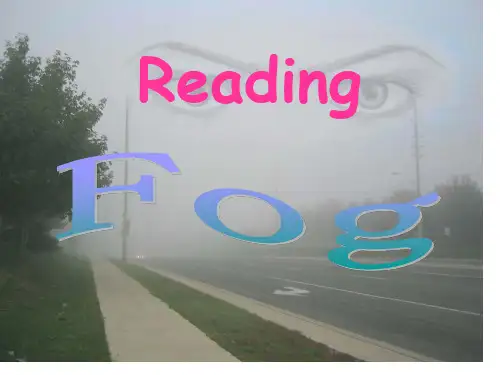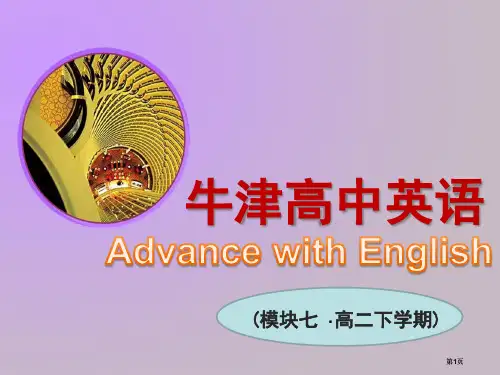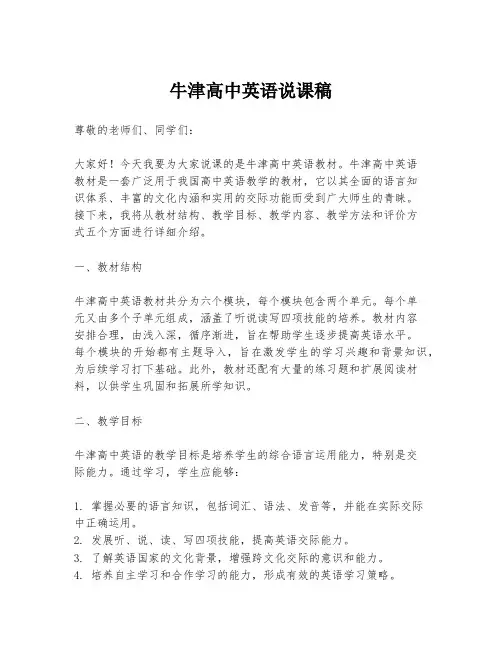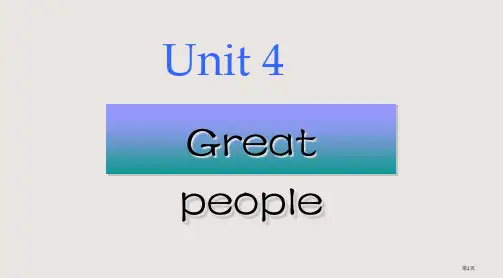牛津高中英语说课稿评优课一等奖
- 格式:doc
- 大小:49.50 KB
- 文档页数:4



牛津高中英语说课稿尊敬的老师们、同学们:大家好!今天我要为大家说课的是牛津高中英语教材。
牛津高中英语教材是一套广泛用于我国高中英语教学的教材,它以其全面的语言知识体系、丰富的文化内涵和实用的交际功能而受到广大师生的青睐。
接下来,我将从教材结构、教学目标、教学内容、教学方法和评价方式五个方面进行详细介绍。
一、教材结构牛津高中英语教材共分为六个模块,每个模块包含两个单元。
每个单元又由多个子单元组成,涵盖了听说读写四项技能的培养。
教材内容安排合理,由浅入深,循序渐进,旨在帮助学生逐步提高英语水平。
每个模块的开始都有主题导入,旨在激发学生的学习兴趣和背景知识,为后续学习打下基础。
此外,教材还配有大量的练习题和扩展阅读材料,以供学生巩固和拓展所学知识。
二、教学目标牛津高中英语的教学目标是培养学生的综合语言运用能力,特别是交际能力。
通过学习,学生应能够:1. 掌握必要的语言知识,包括词汇、语法、发音等,并能在实际交际中正确运用。
2. 发展听、说、读、写四项技能,提高英语交际能力。
3. 了解英语国家的文化背景,增强跨文化交际的意识和能力。
4. 培养自主学习和合作学习的能力,形成有效的英语学习策略。
5. 培养批判性思维能力,能够对所学内容进行分析、评价和创新。
三、教学内容牛津高中英语的教学内容丰富多样,包括:1. 语言知识:教材系统地介绍了英语语法、词汇、发音等基础知识,并配有大量的实例和练习,帮助学生巩固和运用所学知识。
2. 交际技能:通过情景对话、角色扮演、小组讨论等活动,培养学生的口语交际能力和听力理解能力。
3. 阅读技能:选取了各种类型的阅读材料,如故事、新闻报道、科普文章等,提高学生的阅读理解能力和阅读速度。
4. 写作技能:通过写作练习,如记叙文、议论文、说明文等,培养学生的写作能力和表达能力。
5. 文化知识:介绍英语国家的历史、地理、文化、社会等方面的知识,拓宽学生的国际视野。
四、教学方法在牛津高中英语的教学过程中,我们采用以下教学方法:1. 任务型教学:设计贴近学生生活和兴趣的任务,让学生在完成任务的过程中学习和使用英语。

牛津高中英语说课稿评优课一等奖说课稿Good morning, ladies and gentlemen. Today, I feel honored to have the chance to share my ideas about how to teach reading. In the reading process, I will focus on students’ long-term development and enable them to use proper reading skills and strategies. In other words, students are guided to read efficiently and independently. My teaching plan will include 3 sections. They’re analysis of the reading material, identifying the teaching aims and teaching procedures. Section 1 Analysis of the teaching material The selected teaching material is a magazine article taken from the Project section of Module 11, Unit 2 of Advance with English. The article is about British students who take a gap year, which is intended to develop the theme of the unit, that is, Getting a job. After analyzing it carefully, I find the article has two unique characteristics. First, it’s a long passage with 688 words, much more than the usual texts. Second, it deals with a new topic, that is, a gap year. The topic is unfamiliar to most students. Section 2 Indentifying the teaching aims Based on the analysis of the teaching material, I have chosen the following as the teaching aims of my lesson: The 1st aim: Students learn the skills and strategies to read a prolonged text. The 2nd aim: Students get a better understanding of what a gap year is. The 3rd aim: Students are encouraged to figure out the implied meaning. The 4th aim: Students are familiar with various expressions or approaches to express the same thing or idea. Section 3 Teaching procedures In order to achieve the teaching aims mentioned above, I decide to choose guided reading and Task-Based Teaching as the main teaching approach. With the teaching methods, I can guide students to use effective reading strategies to comprehend the text, solve problems and complete different tasks. The teaching procedures include four parts They’re getting ready, focusing on main facts, reading between the lines and responding the text. Part 1 Getting ready Reading begins before a book is opened. It’s important to activate students’ existing background knowledge and draw their attention to the topic of the text. In this part, I will use the pre-reading activities to increase students’concentration, arouse their curiosities, fire their imagination and give them a purpose for reading. The part consists of two tasks: Task 1: A time machine. I start my lesson by asking senior 3 students what the date is. Then, I go on to show a picture of a time machine. I tell students that the machine with a magic power will bring them to their graduation from high school, which is 1 year away. At that point, I get them to imagine where they are and what they are doing. After it, I give a summary of their presentations as follows: After leaving high school, most of Chinese students go straight to universities, at this time next year, mostof you will be studying in a university. (With the task, I inspire students’ former knowledge and imagination about graduating from high school and going to college, which can draw their attention to the theme of the reading material and get them ready for the following reading) Task 2: Brainstorming. After the summary, I go on to show some more pictures of British students fresh from high schools, and tell students that more and more students in the UK are doing something different instead of going straight to university. After that, I play the tape of Para.1 and get students to catch the answer to the question: They will travel or work on projects for up to a year before entering university. (With the task, I excite students’ desire to know more about what their British equivalents will do before going to college. With the question in mind, students will definitely be eager to listen to the tape to find the answer. ) Part 2 Focusing on main facts During the part, I will ask the students to answer the question—What does the author say? Students are supposed to get a main idea of the text and understand the basic meaning of the text. Questions of this kind are not very difficult and they can be answered directly from the text. The part includes six tasks: Task 1: Three examples. I move on to tell students as follows: Last year, Carol Smith, Daniel and Martin Johnson, 3 students from the UK, went to some remote places and did something special. After the instructions, I play the tape of Paragraphs 4-6 and get students to complete the following table. (With the task, I get students to listen to the three paragraphs instead of reading them, thus reducing the amount of reading time and relieving their psychological burden, otherwise students would be discouraged by such a long article.) Task 2: Matching. After listening, I get students to open books and scan the three paragraphs to check the answers to the previous table. Then they’re required to complete another table with a second reading. Whom do the results belong to? Carol________Daniel________ Martin_______. A. felt being part of another culture. B. be more independent. C. found it challenging and rewarding. D. felt thatit was a special experience. E. ready to face challenges in the future. F. learnt how to deal with difficult situations. G. felt like she really made a difference. H. learnt a lot about getting on with local people. (With the task, students learn to use a table to gather the main facts about the three British students. They know that a table is of great helpin their future reading) Task 3: Scanning for a detail. I get students to scan the rest paragraphs and find the answer to the question: What do people call the year off between finishing school and starting university? In doing so, I introduce the theme of the article and write on the blackboard the title: Mind the gap year. (With the task, students are expected to grasp the theme of the article. The task serves as a bridge, which connects the main facts in Paragraphs 4-6 to the opinions about the gap year in the rest paragraphs) Task 4: Definition of the gap year.Students watch a VCR with a question in mind: What three types of activities do the UK students choose to do during a gap year? The key is: Many students use that time to travel, learn new skills or be a charity volunteer. (The task serves as a supplementary to the second task of Part 1. With the task, students are expected to know more about the gap year.) Task 5: History of the gap year. I play a second VCR and get students to answer the question: When did the gap year start in the UK? (The task enables students to have a good knowledge of the history of the gap year.) Task 6: Comments. The second, third, seventh, eighth paragraphs deal with the comments of the government, universities, employers and the public on students taking a gap year before going to college. I get students to read the four paragraphs to gather the comments and complete the table. (The task helps students get a further understanding of the role a table plays in helping gathering main facts or opinions.) Part 3. Read between the lines: In this part, I will encourage the students to answer the question—What does the author mean? As we know, information in a reading passage is not always stated directly. Sometimes students have to infer, or make guesses according to the information which is available in the reading. So in this part, the students are asked to infer the implied meaning, distinguish the main ideas from the supporting details and understand how the text is analyzed. The part consists of three tasks. Task 1: Similar sentences. The English language enjoys various ways of expressing the same thing or idea. As we can see, the second and third paragraphs are similar to the seventh and eighth paragraphs in the content, both dealing with comments on the gap year. Some sentences actually express the same comments. I will get students to read the four paragraphs for a second time to find out the similar sentences.(The first is done as an example) ⑴It (a gap year) is more than just a long holiday. (Line 50) A gap year is more than just a year away from studying. ⑵Employers say they prefer to hire graduates who have taken a gap year. (Line 15) ______________________________ (3)A gap year gives young people an opportunity to learn skills and gain life experience. It helps young people develop and grow. (Lines 17-18) ______________________________ (4)Living away from home taught me to be more independent. (Lines 22-23) ______________________________ (The task is designed to help students learn and use different ways to express the same idea. The task gets students ready for talking and writing about the gap year in the next part) Task 2: Guessing from the context. I get students to guess from the context the meanings of the four words or phrases: ⑴the career ladder (Line 4) ________________________ ⑵every point of the pass (Line 5)________________________ (3)delicate (Line 22) ________________________ (4)an edge in the job market (Line 54) ________________________ (The task helps students to recognize that in most language-leaning situations they will come across vocabulary they don’t know. With the task, students areguided to look at the context in which a word or phrase is used and try to find any clues to its meanings.) Task 3: Benefits. Students are asked to collect advantages of taking a gap year in the text. After that, students have the chance to listen to a third VCR, which contains more information about advantages. While listening, students are encouraged to take notes of what they can catch. □ teach students to be independent; □ help students develop and grow; □ learn new skills; □ see life in a different way; □ be ready to face challenges; □ gain life experience (The task is intended for students to collect more information about students taking a gap year, which also makes them well prepared for the writing task in the next part.) Task 4: Recognizing the implied message.I play a fourth VCR. While listening, students are expected to fill in the two blanks: Actually, a year off is not a gap, but a time for personal growth and d_______, a b______ between two important periods in life. (With the task, students will know about how to plan a gap year and what taking a gap year really means to them. It gets them ready for the next task. ) Task 5: Understanding the title. After reading the whole text, I will get students to focus on the title. Mind the gap. (The task is designed to help students fully understand the hidden meaning of the title: They are expected to make full of the gap year to develop themselves.) Part 4. Responding to the text I encourage the students to answer the question—What does the idea mean to me? As we all know, most writers are prejudiced in some way and try to convince their readers of something, or influence them to look at things in a certain way. So it is important to train students to read critically. The part consists of two tasks. Task 1: I conduct a survey to see what students think of taking a gap year and at the same time complete the table. (The task is aimed at making students be critical readers. The students should be encouraged to evaluate and make judgment about the author's text.) Task 2: After the survey, students are asked to write a composition of 120 words about their ideas of taking a gap year before going to college. (The task aims to consolidate the information they have learnt and also improve speaking and writing skills.) OK, so much for my teaching plan. Thanks for your attention!。